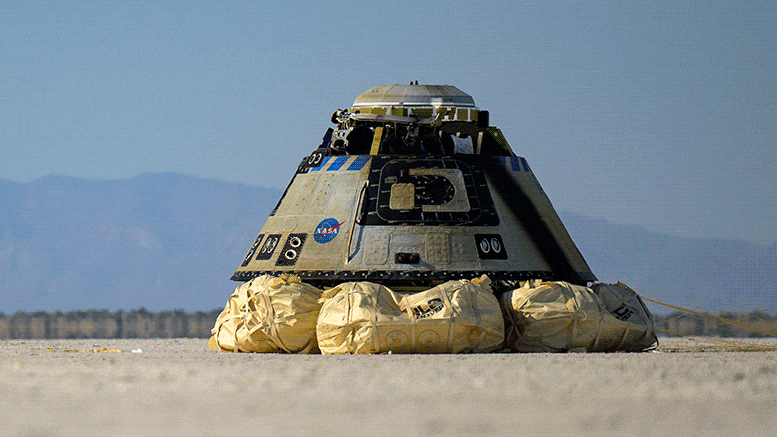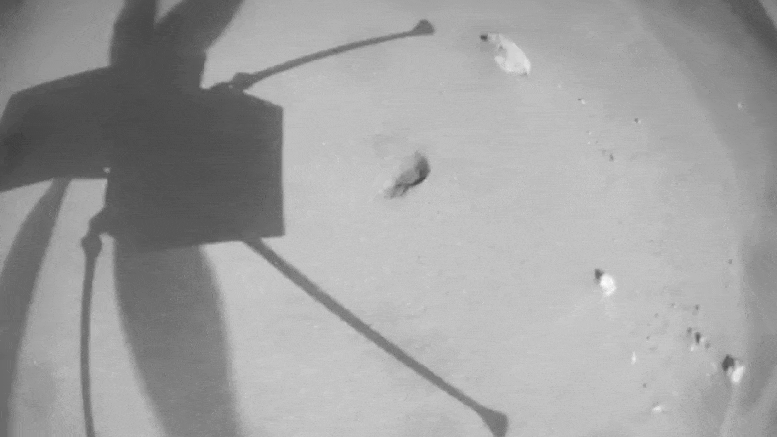
A commercial crew spacecraft’s historic test mission …
Recognizing the leadership of our James Webb Space Telescope team …
And a small spacecraft prepares for a unique mission around the Moon … a few of the stories to tell you about – This Week at NASA!
Boeing’s CST-100 Starliner’s Historic Test Mission
“Approaching the International Space Station …”—Commentator
On May 20, Boeing’s uncrewed CST-100 Starliner spacecraft arrived at the International Space Station on the Orbital Flight Test-2 or OFT-2 mission for NASA’s Commercial Crew Program.
“Soft capture confirmed.”—Mission Audio
“Boeing’s Starliner spacecraft completes its historic first docking to the International Space Station, opening a new avenue of access for crews to the orbiting laboratory.”—Commentator
The next day – another first for Starliner, thanks to the efforts of NASA astronauts Kjell Lindgren and Bob Hines.
“All right – and it looks like the hatch is open to the Starliner. Bob Hines is the first astronaut to enter Starliner in orbit.”—Commentator
The Starliner spent several days at the station, during which time teams conducted a series of planned tests, and the station crew transferred several hundred pounds of cargo and supplies. Starliner undocked from the station on May 25 and returned to Earth later the same day, making a landing at White Sands Space Harbor in New Mexico. The OFT-2 mission was designed to test the end-to-end capabilities of the Starliner system to safely transport astronauts to and from the space station.

Greg Robinson, program director for NASA’s James Webb Space Telescope at NASA Headquarters, gives a brief interview on NASA Television as he and the launch team monitor the countdown to Webb’s launch Dec. 25, 2021, at Europe’s Spaceport in Kourou, French Guiana. Webb is a large infrared telescope with a 21.3-foot (6.5-meter) primary mirror. The observatory will study every phase of cosmic history – from within our solar system to the most distant observable galaxies in the early universe. Credit: NASA/Bill Ingalls
NASA’s Webb Program Director Named to TIME100 List
Gregory Robinson, the program director for NASA’s James Webb Space Telescope, was named to the TIME100 – the magazine’s annual list of the world’s 100 most influential people and leaders. Robinson began his career at NASA in 1989 and joined the Webb team in 2018. In his current role, he oversees what will be the premier space observatory for the next decade. The Webb telescope will explore every phase of 13.5 billion years of cosmic history to help us understand our place in the universe.

CAPSTONE over the lunar North Pole: After arrival at the Moon, CAPSTONE will begin its 6-month-long primary mission. The mission will validate a near rectilinear halo orbit’s characteristics by demonstrating how to enter into and operate in the orbit. Credit: Illustration by NASA/Daniel Rutter
CAPSTONE CubeSat Prepares for Lunar Flight
The Cislunar Autonomous Positioning System Technology Operations and Navigation Experiment, or CAPSTONE mission is targeted for launch no earlier than June 6. It is a collaboration between NASA and industry that will use a microwave oven-sized CubeSat to test a unique elliptical orbit around the Moon, formally known as a near rectilinear halo orbit. The mission will help reduce risk for future spacecraft, including Gateway, a Moon-orbiting outpost for NASA’s Artemis program, by validating innovative navigation technologies and verifying the dynamics of this halo-shaped orbit.

Diffractive solar sails, depicted in this conceptual illustration, could enable missions to hard-to-reach places, like orbits over the Sun’s poles. Credit: MacKenzi Martin
NASA-Supported Solar Sail Could Take Science to New Heights
The NASA Innovative Advanced Concepts, or NIAC program selected a new solar sail concept for development toward a demonstration mission. The solar sail, which uses a property of light called diffraction to make more efficient use of sunlight, could carry science to new destinations.

NASA’s Ingenuity Mars Helicopter made a record-breaking 25th flight on April 8, 2022. The navigation camera aboard the rotorcraft captured its longest and fastest flight to date on the Red Planet. The helicopter covered 2,310 feet (704 meters) at a max speed of 12 mph (5.5 meters per second). Credit: NASA/JPL-Caltech
Ingenuity Mars Helicopter Captures Video of Record Flight
Our Ingenuity helicopter on Mars captured this black-and-white footage during its record-breaking 25th flight. The flight, which took place on April 18, was also Ingenuity’s longest and fastest flight to date. The rotorcraft traveled over 2,300 feet and reached a speed of 12 mph.
That’s what’s up this week @NASA …

